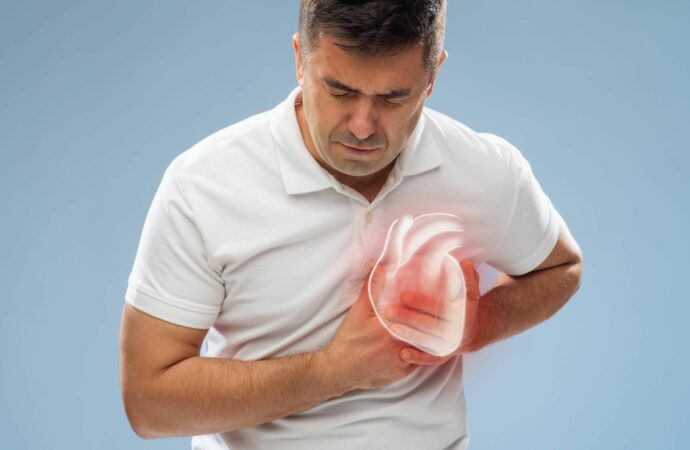Introduction A heart attack is a life-threatening medical emergency that occurs when the blood flow to a section of the heart muscle becomes blocked. Also known as a myocardial infarction, a heart attack requires immediate medical attention to prevent severe damage to the heart and potentially save a person’s life. Understanding the risk factors, recognizing
Introduction
A heart attack is a life-threatening medical emergency that occurs when the blood flow to a section of the heart muscle becomes blocked. Also known as a myocardial infarction, a heart attack requires immediate medical attention to prevent severe damage to the heart and potentially save a person’s life. Understanding the risk factors, recognizing the symptoms, and knowing how to respond promptly can be crucial in mitigating the impact of a heart attack. In this article, we explore the key aspects of heart attacks, empowering readers to be proactive in safeguarding their heart health.
Understanding Heart Attacks
The heart is a muscular organ responsible for pumping oxygen-rich blood throughout the body. A heart attack occurs when there is a sudden blockage in one or more of the coronary arteries that supply blood to the heart muscle. This blockage is often caused by a buildup of fatty deposits called plaque. When the blood flow is interrupted, the heart muscle begins to suffer from a lack of oxygen and nutrients, leading to tissue damage and potential death of heart cells.
Recognizing the Signs and Symptoms
The symptoms of a heart attack can vary from person to person. Some common warning signs include:
- Chest Pain or Discomfort: A feeling of pressure, tightness, or squeezing in the chest that may last for a few minutes or come and go.
- Upper Body Discomfort: Pain or discomfort in the arms, shoulders, back, neck, or jaw.
- Shortness of Breath: Difficulty breathing or feeling as if you can’t catch your breath.
- Nausea and Indigestion: Feeling nauseous or experiencing indigestion without any apparent cause.
- Fatigue: Sudden and unexplained fatigue or weakness.
- Cold Sweats: Feeling clammy and breaking into a cold sweat.
It is important to note that not everyone experiencing a heart attack will have all of these symptoms. Some people may have only mild symptoms, while others may experience severe chest pain.
Immediate Action: What to Do During a Heart Attack
If you or someone around you is experiencing symptoms that suggest a heart attack, taking immediate action is crucial. Here’s what you should do:
- Call Emergency Services: Dial the emergency number (e.g., 911) immediately to seek professional medical help.
- Stay Calm: Try to remain as calm as possible while waiting for help to arrive.
- Take Nitroglycerin (if prescribed): If the person experiencing the heart attack has been prescribed nitroglycerin for chest pain, help them take it as instructed.
- Perform CPR (if necessary): If the person becomes unresponsive and is not breathing, start cardiopulmonary resuscitation (CPR) if you are trained to do so.
Preventing Heart Attacks: Reducing Risk Factors
While some risk factors for heart attacks, such as age and family history, are beyond our control, certain lifestyle changes can significantly reduce the risk of experiencing a heart attack:
- Adopt a Heart-Healthy Diet: Emphasize fruits, vegetables, whole grains, lean proteins, and limit saturated and trans fats, sodium, and added sugars.
- Engage in Regular Exercise: Aim for at least 150 minutes of moderate-intensity aerobic exercise or 75 minutes of vigorous-intensity exercise per week.
- Quit Smoking: Smoking is a major risk factor for heart attacks. Quitting smoking significantly improves heart health.
- Manage Stress: Practice stress-reducing techniques such as meditation, yoga, or engaging in hobbies you enjoy.
- Control High Blood Pressure and Cholesterol: Regularly monitor blood pressure and cholesterol levels and follow medical advice to keep them in a healthy range.
Conclusion
A heart attack is a serious medical emergency that requires immediate attention. Recognizing the symptoms and taking swift action can make a significant difference in the outcome. Leading a heart-healthy lifestyle and managing risk factors can reduce the likelihood of experiencing a heart attack. Being proactive in safeguarding heart health is the first step towards a longer and healthier life. Remember, when it comes to a heart attack, every second counts.


















